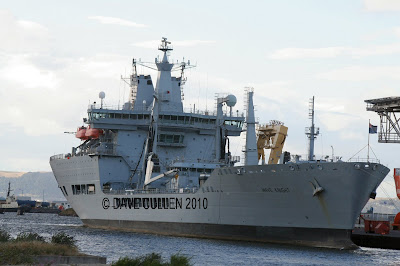These ships are fast fleet tankers capable of replenishment at sea of warships, and with the ability to meet future fuel requirements plus provide a platform for future helicopters.
They are electric ships - which means they are driven by an electric motor, powered by diesel generators - and take advantage of the latest propulsion control technology.
A double-hulled design helps to prevent pollution should the outer hull sustain damage. Their cargo will be mainly Petroleum, Oil and Lubricants (POL) and they replace the O Class ships, Olna and Olwen.
The vessels have been built to commercial standards with military requirements incorporated where necessary. The contract was placed with what was then Vickers Shipbuilding and Engineering Ltd (VSEL), now part of BAE Systems Marine Ltd, in March 1997.
RFA Wave Knight was built by BAE Systems, being launched in 2000. She was accepted into service in 2003.
RFA Wave Ruler was built by BAE Systems, being launched in 2001. She was accepted into service in 2003.
RFA Wave Knight seen here in Leith in 2006
RFA Wave Ruler seen in Leith in 2005, the first picture is two pictures stitched together.





















